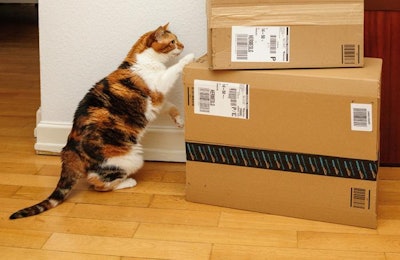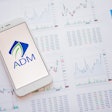
Remember the good ol’ days when the milkman brought fresh moo-juice to your door every gall-darned day (uphill both ways in the snow)? I don’t, but I sure do see the Amazon driver a lot, and I’ve seen milkmen in the movies. Picture each of them as they walk up to the door and return to their delivery trucks. They both leave something, but only the milkman cleaned up after himself. He took the previous day’s packaging with him. On the other hand, modern-day deliveries result in mountains of plastic and cardboard.
The boom in e-commerce, including pet food, created sustainability challenges, not least of which was how to deal with that packaging waste. However, many of those same online pet food buyers also want to ensure the well-being of pets, people and wildlife, both now and in the future. These concerns include the ecological and social effects of pet food production and distribution. Speaking generationally, those who don’t remember milkmen, but perhaps do remember the Dead Milkmen, are those who have shifted to online retail. Millennials and Gen-X increasingly feel anxiety about the continued stability of Earth’s economies and ecosystems. Millennials now make up the largest pet-owning age group in the United States’ massive pet food market. Ecological, social and economic sustainability have become a permanent influence on these consumers’ buying choices. Quite a few old hippy Boomers have been following that philosophy for decades, and I bet some of those forward-thinking flower children might be the most likely to adopt new technology like online pet food shopping.
So, as home delivery of dog and cat food has grown in popularity, sustainability concurrently became a permanent influence on consumers’ buying choices. If people can level real mountaintops to mine coal in Appalachia, why can’t we develop a way to chip away as Mt. Plasticwaste? The milkman provides a clue about how to address this issue, and some human food brands have taken the hint.
Reusable pet food packaging
Could companies package pet food in reusable containers, like the milk bottles of old? A system could be modeled on Loop, owned by TerraCycle. With Loop, products arrive in a collapsible tote, which is also used to return the empty packaging from the products. For example, a customer buys some ice cream. The ice cream comes in a metal container for which the buyer pays a US$3 deposit. However, I haven’t tried Loop. It seems a bit more expensive than buying similar items in a store or online, and there is a US$15 shipping charge for smaller orders. I live a few blocks from a supermarket, so my feet can provide free delivery with far lower greenhouse gas emissions. Not everyone is that location lucky though.
Despite the costs, there seems potential for superpremium pet food, since people that spend more on their dogs and cats may also be influenced by sustainability concerns. Likewise, they may be in the economic and age groups that increasingly buy pet food online. Customized superpremium home-delivered pet food, especially of kibble, would seem a natural fit for a reusable packaging system.


















